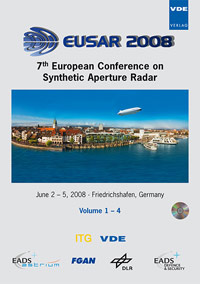Compact PolInSAR and Ionosphere
Konferenz: EUSAR 2008 - 7th European Conference on Synthetic Aperture Radar
02.06.2008 - 05.06.2008 in Friedrichshafen, Germany
Tagungsband: EUSAR 2008
Seiten: 4Sprache: EnglischTyp: PDF
Persönliche VDE-Mitglieder erhalten auf diesen Artikel 10% Rabatt
Autoren:
Dubois-Fernandez, Pascale; Truong-Loi, My-Linh; Angelliaume, Sebastien; Souyris, Jean-Claude (ONERA, FR)
Inhalt:
In spaceborne SAR, a single-polarisation on transmit has, over full polarisation, the vast advantage of a double swath due to SAR system design issues. Without getting into the technical details deserving by themselves a full paper, we can just mention the swath characteristics of ALOS PALSAR, reducing from 70km for dual-pol mode to 30 km for full-polarisation mode. The options chosen up to now for dual-pol system designs (or single-polarisation on transmit) rely on a linear polarisation on transmit, with two orthogonal polarisations on receive. In an earlier paper, we proposed a more pertinent alternative for the selection of the transmit polarisation leading to a better characterisation of the scattering mechanisms. This mode is called the π/2 CP mode, in reference to the transmit polarisation being circular. At low frequency, where the ionosphere has a significant effect, the circular transmit polarisation is the only sensible option as it provides an effective constant polarisation as seen by the scattering surface. This is an essential condition for a meaningful multi-temporal analysis In this paper, the analysis is pursued in more depth by including the effect of the ionosphere on the wave propagation, exploring both the POLSAR and PolInSAR applications and investigating procedure to estimate the Faraday rotation from the CP data.


